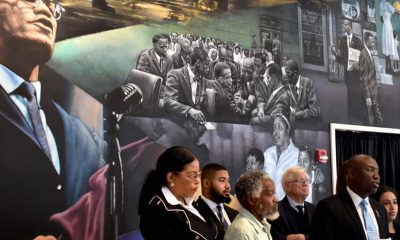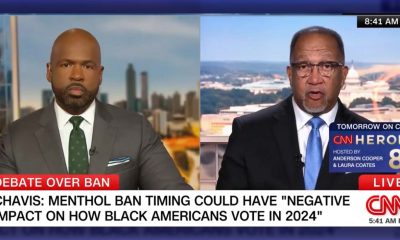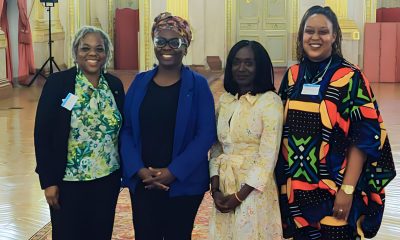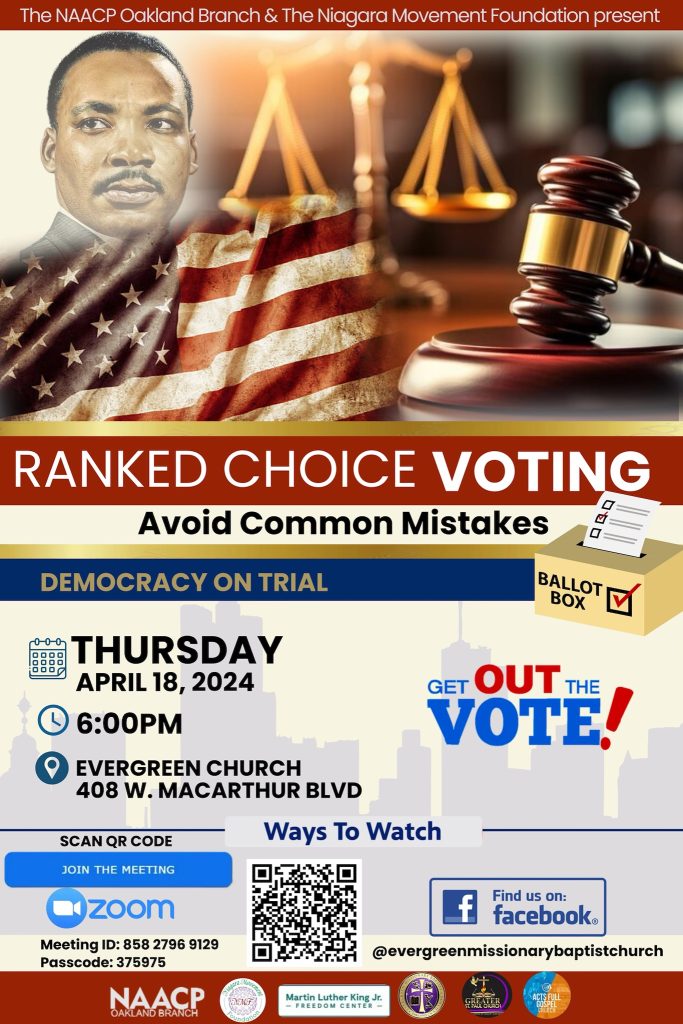National
Families, Activists Refuse to Forget Lives Lost to Police

Marchers take to streets of Baltimore May 10 as part of continued demands for justice in the death of Freddie Gray, 25, who died a week after an encounter with police. (Courtesy of The Final Call)
by Richard B. Muhammad
Special to the NNPA from The Final Call
BALTIMORE (The Final Call) – The tears Tawanda Jones sheds flow freely at times. Her voice breaks a little. But none of it stops her from pressing for justice for her brother, who died during an encounter with police officers, and standing for others who have suffered similar losses.
The death of Freddie Gray and the uprising that followed brought attention from around the world to this majority Black city with a long history of police problems.
Before Freddie Gray there was Tyrone West, who is Ms. Jones’ brother, and there was Anthony Anderson, Trayvon Scott, George V. King and others who died in police custody, or encounters, without prosecutors finding anything was wrong.
“My family means everything to me,” said the 38-year-old educator. The two-year anniversary of Tyrone’s death is July 18, 2015. She sits in church with family, without her big brother. She cries as she describes what happened:
It was a typical summer day. Tyrone, who worked part-time, would drive her car, pick her up and take her to work. “It worked out perfectly,” she recalled. They talked, dropped her children off, dropped her off. Tyrone went to work and some other appointments. At the end of the day, Tyrone was waiting for her. Ironically she would talk to her brother about Officer Friendly visiting her summer class that day. They would talk about the death of Trayvon Martin, a Black teenager in Florida, and the acquittal of his killer George Zimmerman. “We’re worried about Zimmerman’s there, we got Zimmerman’s on every corner in Baltimore,” Tyrone said, according to his sister. He got a call from a new acquaintance, a young woman, on the hot day. The tired schoolteacher agreed to have him use her car to pick up his niece and pick up the young woman who was stranded.
A half-hour later she had a kind of premonition, sharp sudden pains in her neck, her body, and fell to the floor. She didn’t know what was happening. Her thoughts turned to Tyrone and his safety. She had always hoped driving her car would make things a little easier and help shield him from Black on Black violence. She could not reach him.
Later that night her partner shared news a media report would verify: Tyrone was dead after an encounter with city police officers while driving her green Mercedes in northeast Baltimore.
“My whole world just ended that day. I couldn’t breathe. I was here physically but spiritually, I was gone. It was heartbreaking,” she said.
Eyewitnesses told her Tyrone was beaten worse than Rodney King and officers brutalized him, she said. Police officers and the medical examiner gave the family the runaround to get her brother’s body and her car was impounded, she said. It took five days to see his body, but when the family saw his body it was already made up, she said. It didn’t look like Tyrone and her family has refused to let questions about his death go unanswered. An appeal to the state’s attorney at the time for help was rebuffed, she recalled. Prosecutors said the death was from natural causes related to dehydration and cardiac arrest. The medical examiner was inconclusive on whether officers were responsible for the death.
After months of trying to get answers and access, the state’s attorney met with the family and was cordial while a videographer recorded the meeting, said Ms. Jones. The camera was turned off after introductions and the state’s attorney’s persona changed too, she said.
Don’t get too comfortable in those seats. I am not going to charge the officers, she recalls the state’s attorney saying. Ms. Jones also said then State’s Attorney Gregg Bernstein gave immunity to the officers involved in her brother’s death.
A special investigation found the police department erred numerous times during the investigation into the West death, according to media reports. Police failed to say where an alleged bag with cocaine was found and did not test it for Tyrone’s fingerprints, crime scene photos weren’t organized properly and the investigation focused too heavily on Tyrone’s criminal past but did not examine the records of the officers involved. The department also failed to inform the family and needed more transparency, the report added. It did not find any evidence of excessive force.
Despite the pain and threats following a wrongly edited media statement attributed to her about holding “killer cops” accountable, Ms. Jones and her family members have refused to quit.
She backed current States Attorney Marilyn J. Mosby over Mr. Bernstein, who she said callously mishandled her family. Every week is “West Wednesday,” where she, family members and supporters go out and continue to demand justice for Tyrone.
None of the officers involved in Tyrone’s case have been fired and some have been involved in other instances of brutality and death, she charged. Attempts to reach Mr. Bernstein through law firm Zuckerman Spaeder LLP were unsuccessful at Final Call press time.
Dora Moses, 54, moved her children out of the city fearing for their lives. She grew up and raised children here, but fled to Pennsylvania as overall violence and police violence took its toll. She especially feared for her son. She fears for her grandsons who are toddlers.
“I don’t see the problems being resolved to the degree where I feel safe with them being,” said the grandmother.
Her daughter’s boyfriend’s death at the hands of police officers on Liberty Heights Avenue was the final straw. She packed up with no plans, found a cheap home and left.
Her daughters have moved back to Baltimore and she worries about her six grandsons. She would like to see her daughters and grandchildren come back to Pennsylvania. She was in town to help her daughter with the active and talkative young boys.
Sitting on the steps of a row house where her daughter lives, she saluted protestors who marched by calling for justice in the killing of Freddie Gray, an unarmed Black man who the state’s attorney says was illegally arrested and negligently handled by police officers. Charges have been filed against six officers in connection with the death of the Sandtown-Winchester resident.
According to the American Civil Liberties Union of Maryland, between 2010 and 2014, at least 109 people died in police encounters in Maryland. In a briefing paper released earlier this year, the ACLU found deaths dispersed throughout 18 different jurisdictions across the state. But “nearly 70 percent of those who died in police encounters were Black … more than 40 percent of those who died were unarmed, and that police officers were criminally charged in less than two percent of the 109 cases cited by the ACLU.”
The ACLU compiled the paper after learning state officials do not track these cases, the group said.
“State leaders must act now to send a clear message to families, communities and police that all lives matter and that these deaths are not inevitable,” said Sonia Kumar, ACLU staff attorney, at the paper’s release. “We must report and track deaths in police encounters in order to learn the lessons that will prevent these tragedies from recurring.”
“Outside of the families and communities who have borne the brunt of these losses, the full extent of deaths in police encounters has never been formally acknowledged by public officials in Maryland,” said the ACLU. “There is no centralized state or federal reporting requirement when people die in police encounters. There are more than 140 state and local law enforcement agencies in Maryland, but no official tracking of how frequently or under what circumstances they are involved in the loss of civilian lives. The scant national data that is available suggests that Maryland has a very high number of police-involved civilian deaths relative to other states.”
“Five Black people died at the hands of police for every White person who died, when the size of the Black and White populations were taken into account. Put another way, the rate at which Blacks died by a police encounter (deaths per population size) was five times that of Whites. Forty-one percent of those who died (45 people) were not armed with a weapon of any kind.
The number of unarmed Blacks who died (36 people) exceeded the total number of all Whites who died (30 people), armed or not,” the ACLU reported.
“Ten unarmed Black people died for every unarmed White person who died, when the size of the Black and White populations were taken into account. Put another way, the rate at which unarmed Blacks died by a police encounter (deaths per population size) was ten times that of Whites.”
“Thirty-eight percent of those who died (41 people) presented in a way that suggested a possible medical or mental health issue, disability, substance use or similar issue. Seventy-nine percent of those who died (86 people) were killed by police gunfire. Twenty-one percent of those who died (23 people) were not shot; in most of these cases police used handcuffs or other restraints, pepper spray, and/or a taser. Several individuals were killed in the course of a vehicle pursuit.
Ms. Jones said, “The only thing we can do is hold police accountable. We need to put things in place to make sure nobody else goes through this.”
Cortly “C.D.” Witherspoon, Sr., head of the Baltimore Chapter of the Southern Christian Leadership Conference, lives around the corner from where the incident with Freddie Gray happened. He has been working on police brutality for several years and was arrested at city hall trying to get attention to the problem from the mayor and city council president.
He started with the 2010 case of disabled man David Yem, who was shot by a police officer. Mr. Yem, who was already paralyzed on one side of his body and had emotional issues, was shot as an officer fired through a windshield in the Poplar Grove community in West Baltimore, he said. The man had a knife but was not a threat, he said. Mr. Yem recovered. No charges were filed against the police officer, who said the disabled man charged his car.
The shots were fired in broad daylight with children around, said Mr. Witherspoon.
Anthony Anderson was in East Baltimore, in front of family members and grandchildren, when officers said they saw a drug transaction and body slammed him on his head, said Mr. Witherspoon. He died and no drugs were found on the scene or in his system, he added.
Threats to file Freedom of Information Act requests forced police to recant the initial statement, but no one was charged, the activist continued. Last year George King went to a hospital for a tooth extraction and was tased to death by Baltimore city police officers, he said.
Within 48 hours protests were organized outside city hall and thousands came to a second protest in the community, said Mr. Witherspoon.
He said he was present when the former state’s attorney Bernstein told the family of Anthony Anderson no charges would be filed though the medical examiner declared death a homicide.
“This same state’s attorney tried two young African America men twice for harming a dog. The first time these two young men were acquitted. The second time they were acquitted. He tried them twice trying to ensure that these young men were convicted. We can’t even get an officer indicted in Baltimore—this was under the previous state’s attorney,” he said.
“What we are hoping to do is at some point to lobby this state’s attorney, the new state’s attorney that we elected, because of Gregg Bernstein’s complete lack of political will to do the right thing. We are hoping to present these cases back to her for reconsideration,” said Mr. Witherspoon, who has traveled to different places across the country supporting the calls for police accountability.
Charging the officers was step in the right direction, but there should have been first degree murder charges, he said. Mr. Gray should have been in an ambulance, not a police wagon, he said.
“We are tired of the double standard that exists in our society that has it so that officers are allowed to get away with murder. The murder of Black men in every city across this country,” he said.
“I say the integrity of these people who are questioning (Mrs. Mosby), in lieu of this, their integrity should be questioned. Their competency should be questioned. When somebody is held accountable for killing an African America man, then their competency is questioned? That’s racist in nature,” he said.
Commentary
Commentary: Republican Votes Are Threatening American Democracy
In many ways, it was great that the Iowa Caucuses were on the same day as Martin Luther King Jr. Day. We needed to know the blunt truth. The takeaway message after the Iowa Caucuses where Donald Trump finished more than 30 points in front of Florida Gov. De Santis and former South Carolina Governor Nikki Haley boils down to this: Our democracy is threatened, for real.

By Emil Guillermo
In many ways, it was great that the Iowa Caucuses were on the same day as Martin Luther King Jr. Day.
We needed to know the blunt truth.
The takeaway message after the Iowa Caucuses where Donald Trump finished more than 30 points in front of Florida Gov. De Santis and former South Carolina Governor Nikki Haley boils down to this: Our democracy is threatened, for real.
And to save it will require all hands on deck.
It was strange for Iowans to caucus on MLK day. It had a self-cancelling effect. The day that honored America’s civil rights and anti-discrimination hero was negated by evening.
That’s when one of the least diverse states in the nation let the world know that white Americans absolutely love Donald Trump. No ifs, ands or buts.
No man is above the law? To the majority of his supporters, it seems Trump is.
It’s an anti-democracy loyalty that has spread like a political virus.
No matter what he does, Trump’s their guy. Trump received 51% of caucus-goers votes to beat Florida Gov. Ron DeSantis, who garnered 21.2%, and former South Carolina Gov. Nikki Haley, who got 19.1%.
The Asian flash in the pan Vivek Ramaswamy finished way behind and dropped out. Perhaps to get in the VP line. Don’t count on it.
According to CNN’s entrance polls, when caucus-goers were asked if they were a part of the “MAGA movement,” nearly half — 46% — said yes. More revealing: “Do you think Biden legitimately won in 2020?”
Only 29% said “yes.”
That means an overwhelming 66% said “no,” thus showing the deep roots in Iowa of the “Big Lie,” the belief in a falsehood that Trump was a victim of election theft.
Even more revealing and posing a direct threat to our democracy was the question of whether Trump was fit for the presidency, even if convicted of a crime.
Sixty-five percent said “yes.”
Who says that about anyone of color indicted on 91 criminal felony counts?
Would a BIPOC executive found liable for business fraud in civil court be given a pass?
How about a BIPOC person found liable for sexual assault?
Iowans have debased the phrase, “no man is above the law.” It’s a mindset that would vote in an American dictatorship.
Compare Iowa with voters in Asia last weekend. Taiwan rejected threats from authoritarian Beijing and elected pro-democracy Taiwanese vice president Lai Ching-te as its new president.
Meanwhile, in our country, which supposedly knows a thing or two about democracy, the Iowa caucuses show how Americans feel about authoritarianism.
Some Americans actually like it even more than the Constitution allows.
About the Author
Emil Guillermo is a journalist and commentator. He does a mini-talk show on YouTube.com/@emilamok1.
Activism
Oakland Post: Week of April 10 – 16, 2024
The printed Weekly Edition of the Oakland Post: Week of April 10 – 16, 2024
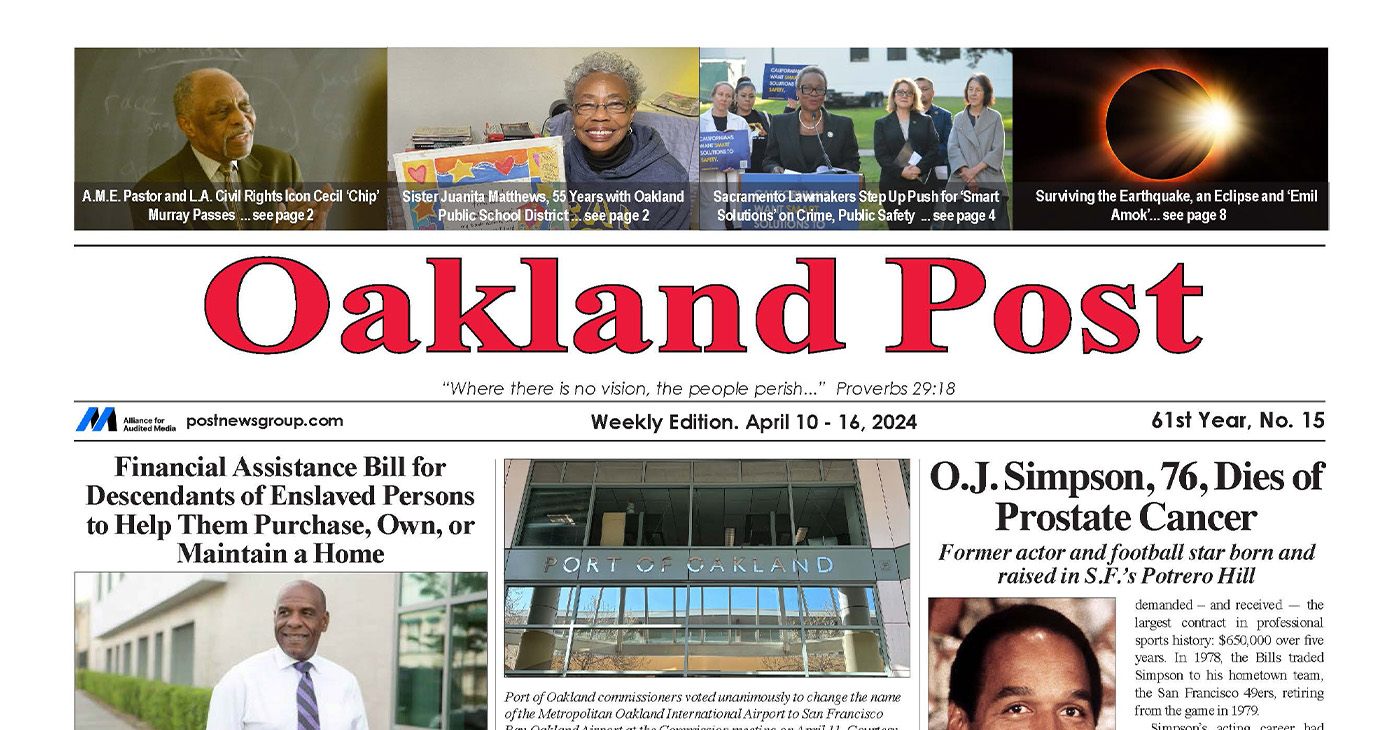
To enlarge your view of this issue, use the slider, magnifying glass icon or full page icon in the lower right corner of the browser window. ![]()
Activism
Oakland Post: Week of April 3 – 6, 2024
The printed Weekly Edition of the Oakland Post: Week of April 3 – 6, 2024
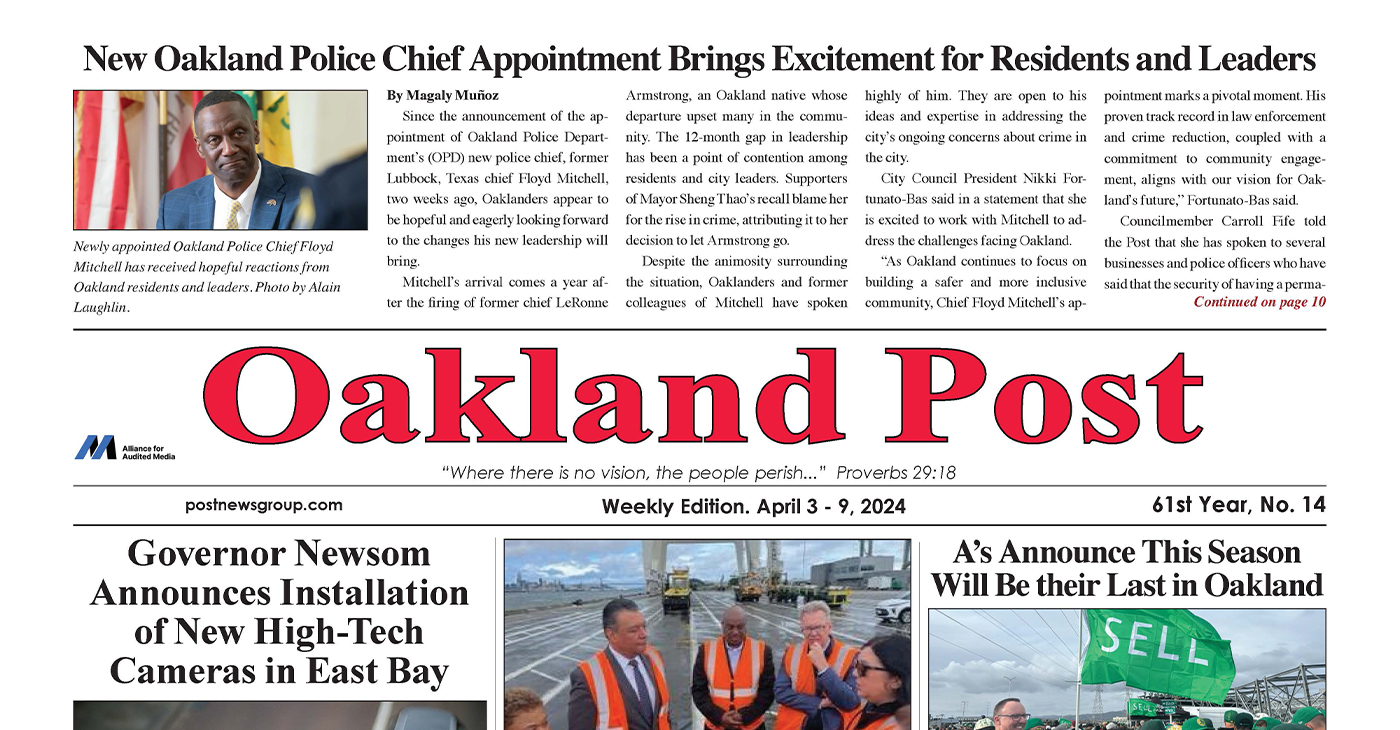
To enlarge your view of this issue, use the slider, magnifying glass icon or full page icon in the lower right corner of the browser window. ![]()
-

 Activism4 weeks ago
Activism4 weeks agoOakland Post: Week of March 20 – 26, 2024
-

 #NNPA BlackPress3 weeks ago
#NNPA BlackPress3 weeks agoMayor, City Council President React to May 31 Closing of Birmingham-Southern College
-

 #NNPA BlackPress3 weeks ago
#NNPA BlackPress3 weeks agoCOMMENTARY: D.C. Crime Bill Fails to Address Root Causes of Violence and Incarceration
-

 #NNPA BlackPress3 weeks ago
#NNPA BlackPress3 weeks agoFrom Raids to Revelations: The Dark Turn in Sean ‘Diddy’ Combs’ Saga
-

 #NNPA BlackPress3 weeks ago
#NNPA BlackPress3 weeks agoCOMMENTARY: Lady Day and The Lights!
-

 #NNPA BlackPress3 weeks ago
#NNPA BlackPress3 weeks agoBaltimore Key Bridge Catastrophe: A City’s Heartbreak and a Nation’s Alarm
-

 #NNPA BlackPress3 weeks ago
#NNPA BlackPress3 weeks agoBaltimore’s Key Bridge Struck by Ship, Collapses into Water
-

 Activism3 weeks ago
Activism3 weeks agoOakland Post: Week of March 27 – April 2, 2024

